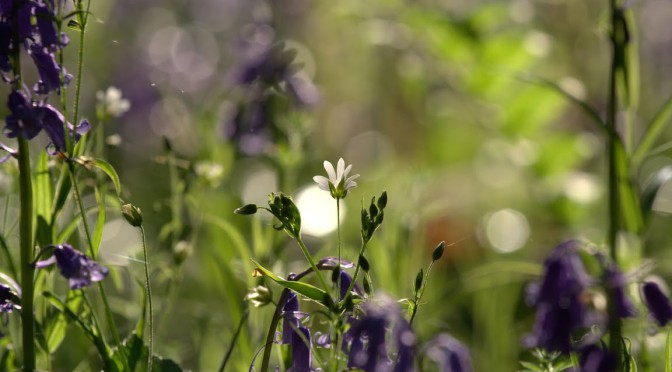Introduction
Although an ancient woodland site, throughout much of Oakley Wood the native broadleaved trees were felled in the 1950s and replaced with conifers—mostly Scots pine with a few areas of Douglas fir. The long term aim of management of the wood is to restore it to being a native broadleaved wood. The vision of the management plan is
Oakley Wood is to be perpetuated for future generations as a prominent and attractive woodland feature within the local landscape, whilst over time becoming increasingly naturalistic in its composition and structure and thereby heightening its biodiversity value. The woodland is to be made available as a local resource for informal low impact recreational and educational use and management is to recognise and reflect the woodland as a renewable natural resource
Warwick District Council, which owns the wood, adopted a management plan in 2009 following consultation with the Friends of Oakley Wood and the wider community. You can read the full plan on the Council’s website. The management plan is a dynamic document which is updated in the light of experience, so you will find various later documents that modify and update the original plan.
Warwickshire Wildlife Trust is currently leading a review of the management plan, in consultation with the FoOW and the Council.
Main features of the management plan
Restructuring
Because much of the wood was planted at around the same time, the trees are all of a similar age and size. The greater the diversity in a woodland the better it is for wildlife, so an important theme of the management plan is to gradually restructure the wood to provide a greater diversity of species and ages.
Work began in 2011 with a major thinning operation. Trees in the wood were very overcrowded, casting dense shade. Around 30% of the trees in the wood were removed, allowing more light to reach the ground and other trees. In the future some further thinning will be carried out. In addition, small areas of conifers will be felled to allow young broadleaved trees and shrubs to develop. This is a strategy known as ‘continuous cover forestry’. The rolling process will gradually increase the proportion of broadleaved trees in the wood and introduce greater diversity to the age structure.
Ride management
The most important part of a woodland from a wildlife point of view is the edge. Rides are the network of wide paths that run through a wood. By creating wide enough rides the proportion of edge habitat in a woodland can be dramatically increased as each edge of a ride becomes edge habitat. A greater number of species inhabit the first 10 metres of any woodland edge or ride edge than inhabit the remainder of the woodland ((Forestry Commission (2005) Managing woodland open space for wildlife, Operations Note 011, Available from http://www.forestry.gov.uk/pdf/ewgs-on011-ride-mangt.pdf/$FILE/ewgs-on011-ride-mangt.pdf)).

Over the course of five years a network of wide rides will be introduced to the wood. Allowing more light to reach the ground will encourage more wildflowers and insects that need sunlight, as well as helping to dry out the path after periods of rain. The rides will have two or three ‘zones’ of differing habitat type, including close mown grasses, tall herbage and shrubs (see illustration). Rides that run east to west tend to be of more benefit to wildlife because they get sun for more of the day, particularly along their northern edge. To take advantage of this, wider three zone rides will run roughly east to west, whilst the rides running north to south will be slightly narrower and have two habitat zones.
The plan below illustrates the programme of ride widening, showing in which years work was done or is planned to be done. To avoid disturbing nesting birds and minimise damage to spring flowers the work is always carried out during the winter.

Download a printable PDF version of the ride management plan


Is there any intwnt to clear the debris thatlooks as though a hurricane has blown through and are any of the deep tyre tracks going to be levelled,.
Any chance that rustic seating could be implemented around the woods for us not so young walkers??
Quite a lot has already been done to clear brash, fill in ruts and reinstate the paths, and more is planned. There are two practical work days later this month focusing on brash.
I think some seats or resting posts would be a good idea. It would be useful to know from people who feel they need them where these would be most useful. If you have any suggestions do use the ‘contact us’ page to let us know.
Love what has been done (although at the time didn’t understand it and was pretty aggrieved).